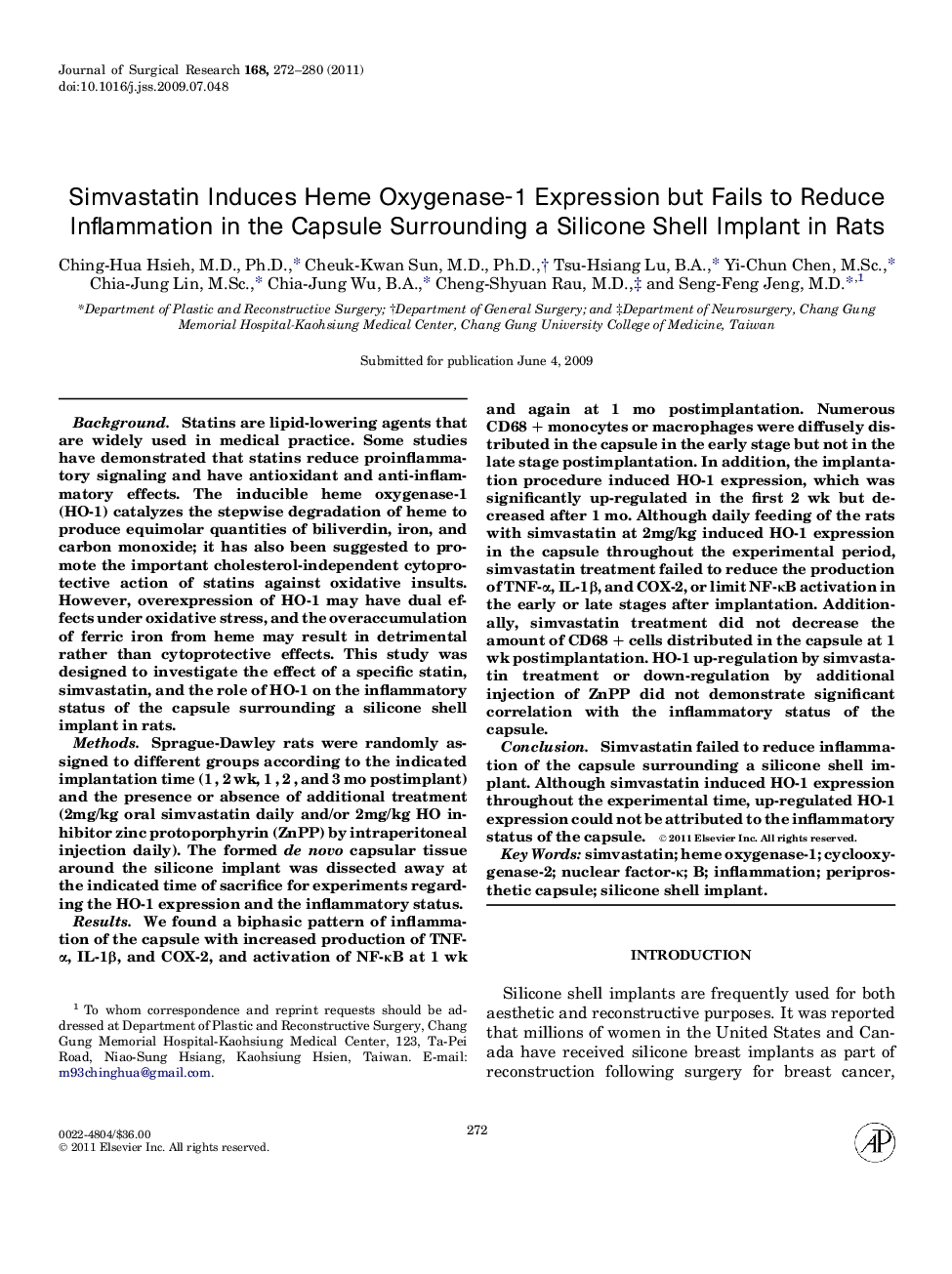| Article ID | Journal | Published Year | Pages | File Type |
|---|---|---|---|---|
| 4302490 | Journal of Surgical Research | 2011 | 9 Pages |
BackgroundStatins are lipid-lowering agents that are widely used in medical practice. Some studies have demonstrated that statins reduce proinflammatory signaling and have antioxidant and anti-inflammatory effects. The inducible heme oxygenase-1 (HO-1) catalyzes the stepwise degradation of heme to produce equimolar quantities of biliverdin, iron, and carbon monoxide; it has also been suggested to promote the important cholesterol-independent cytoprotective action of statins against oxidative insults. However, overexpression of HO-1 may have dual effects under oxidative stress, and the overaccumulation of ferric iron from heme may result in detrimental rather than cytoprotective effects. This study was designed to investigate the effect of a specific statin, simvastatin, and the role of HO-1 on the inflammatory status of the capsule surrounding a silicone shell implant in rats.MethodsSprague-Dawley rats were randomly assigned to different groups according to the indicated implantation time (1 , 2 wk, 1 , 2 , and 3 mo postimplant) and the presence or absence of additional treatment (2mg/kg oral simvastatin daily and/or 2mg/kg HO inhibitor zinc protoporphyrin (ZnPP) by intraperitoneal injection daily). The formed de novo capsular tissue around the silicone implant was dissected away at the indicated time of sacrifice for experiments regarding the HO-1 expression and the inflammatory status.ResultsWe found a biphasic pattern of inflammation of the capsule with increased production of TNF-α, IL-1β, and COX-2, and activation of NF-κB at 1 wk and again at 1 mo postimplantation. Numerous CD68 + monocytes or macrophages were diffusely distributed in the capsule in the early stage but not in the late stage postimplantation. In addition, the implantation procedure induced HO-1 expression, which was significantly up-regulated in the first 2 wk but decreased after 1 mo. Although daily feeding of the rats with simvastatin at 2mg/kg induced HO-1 expression in the capsule throughout the experimental period, simvastatin treatment failed to reduce the production of TNF-α, IL-1β, and COX-2, or limit NF-κB activation in the early or late stages after implantation. Additionally, simvastatin treatment did not decrease the amount of CD68 + cells distributed in the capsule at 1 wk postimplantation. HO-1 up-regulation by simvastatin treatment or down-regulation by additional injection of ZnPP did not demonstrate significant correlation with the inflammatory status of the capsule.ConclusionSimvastatin failed to reduce inflammation of the capsule surrounding a silicone shell implant. Although simvastatin induced HO-1 expression throughout the experimental time, up-regulated HO-1 expression could not be attributed to the inflammatory status of the capsule.
